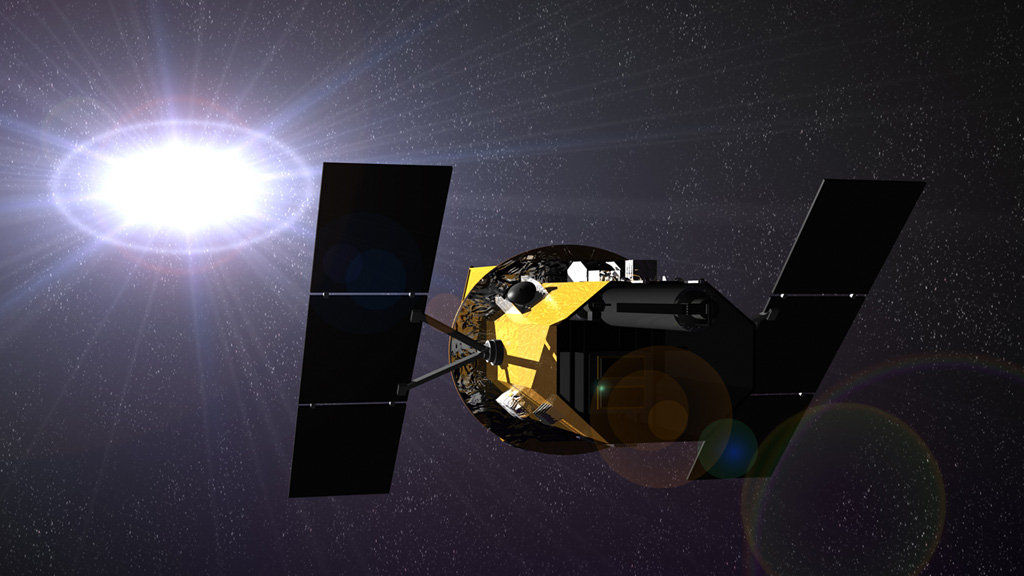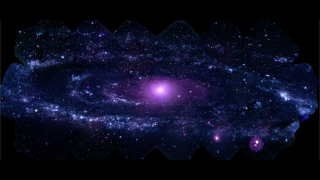Universe
ID: 11675

The famous Andromeda Galaxy, also known as M31, takes its name from its host constellation. Located 2.5 million light-years away, this vast starry spiral is the closest galaxy similar to our own. Between May 25 and July 26, 2008, NASA’s Swift satellite acquired 330 images of M31 in ultraviolet light. The images reveal dense clusters of hot, young stars, especially plentiful in an enormous ring about 150,000 light-years across. As in our own galaxy, M31's disk and spiral arms contain most of the gas and dust needed to produce new generations of stars. Viewing the galaxy in ultraviolet light allows scientists to study M31's star-formation processes in greater detail than ever before. Watch the video for a tour of M31.



The Andromeda Galaxy




Related Story
For More Information
Story Credits
Lead Visualizer/Animator:
Stefanie Misztal (UMBC)
Narrator:
Stefan Immler (UMCP)
Producer:
Stefanie Misztal (UMBC)
Lead Scientist:
Stefan Immler (UMCP)
Lead Writer:
Francis Reddy (Syneren Technologies)
Stefanie Misztal (UMBC)
Narrator:
Stefan Immler (UMCP)
Producer:
Stefanie Misztal (UMBC)
Lead Scientist:
Stefan Immler (UMCP)
Lead Writer:
Francis Reddy (Syneren Technologies)
Please give credit for this item to:
NASA's Goddard Space Flight Center
M31 ultraviolet image courtesy of NASA/GSFC/Swift/Stefan Immler and UMCP/Erin Grand
M31 optical image courtesy of NSF/AURA/NOAO/REU program/B. Schoening and V. Harvey
NASA's Goddard Space Flight Center
M31 ultraviolet image courtesy of NASA/GSFC/Swift/Stefan Immler and UMCP/Erin Grand
M31 optical image courtesy of NSF/AURA/NOAO/REU program/B. Schoening and V. Harvey
Short URL to share this page:
https://svs.gsfc.nasa.gov/11675
Keywords:
SVS >> Astrophysics
SVS >> App
NASA Science >> Universe
https://svs.gsfc.nasa.gov/11675
Keywords:
SVS >> Astrophysics
SVS >> App
NASA Science >> Universe








